Atlas Rockets Overview
50 years of Rocketry
Atlas was the name given to Americas first operational ICBM. Although its career as a nuclear armed missile was short-lived, the Atlas has evolved into one of the worlds premier satellite launchers. Over the last 50 years, more than 600 Atlas rockets have flown.
Stage and a Half Propulsion System
One unusual feature of the Atlas rocket is its unique staging system. In the 1950's, rocket designers faced a number of serious challenges. Clearly, there were significant benefits to the concept of 'staging', or the dropping of used engines and fuel tanks to lighten a rocket as it heads toward orbit. However, chemical rockets of this era could not be reliably started. The only way to ensure that a rocket started correctly was to start the engines while the rocket was still on the ground. Using conventional staging, with second stage engines starting in flight, would simply be too unreliable given 1950's technology.
The radical solution developed was two fold. First of all, of the three main rocket engines on the Atlas, only one remained with the Atlas all the way to orbit. The inner engine, sometimes referred to as the sustainer engine, remained permanently attached to the rocket, while the two outer engines, known as booster engines, were used only during the first few minutes of flight.
As the rocket rose into the air, fuel was consumed at a fast rate. After a short period of time, the rocket became light enough and the two booster rockets were dropped. By shedding the weight of the two booster engines, the Atlas was now light enough to fly all the way to orbit using only the sustainer engine.
Balloon Tank Structure
Another design feature of the Atlas was the use of an extremely lightweight structure. The structure, known as a 'balloon' structure, was so lightweight that the fuel tanks needed to be continuously pressurized to avoid collapsing under their own weight! (Atlas rockets on display at museums use an air compressor to keep the tanks pressurized. If the air compressor fails for any reason, the rocket is at risk of collapsing. Some displays have had an internal structure built within the tanks to provide support.)
The lightweight balloon structure, along with the ability to drop the booster engines in flight, allowed the Atlas to approach conventionally staged rockets in performance while still retaining the ability to start and test all main engines while still safely on the ground.
Payloads
Perhaps the most famous payload launched on the shoulders of Atlas was the Friendship 7 spacecraft in 1962. It was aboard Friendship 7 that John Glenn became the third man to orbit the Earth. Atlas ultimately launched four manned Mercury missions.
Atlas went on to play a critical role in support of project Gemini. Atlas was used to launch heavily modified Agena stages, known as Agena Target Vehicles (ATV), to serve as docking targets for orbiting Gemini spacecraft.
Scientific probes launched on Atlas rockets include the first mission to Mercury (Mariner 10), Venus (Mariner 2), Mars (Mariner 4), Jupiter (Pioneer 10), Saturn (Pioneer 11), and Pluto (New Horizons). Atlas rockets also launched all of the Ranger, Surveyor, and Lunar Orbiter probes to the Moon.
Still Flying
Fifty years after its first orbital flight, Atlas continues to launch American military, commercial, and scientific spacecraft. Continually evolved and improved over the decades, the current version, Atlas V, bears little resemblance to versions first flown in the middle of the last century. With a heritage that spans six decades, Atlas rockets will continue to see service for many years to come.
Atlas (Early Models)

Atlas-A missile (PGM-16A)
Atlas-A rockets flew sub-orbital test flights. The missions did not fly with a sustainer engine. Only the two booster engines were included.
The first flight, launched on 11 June 1957, was a failure. A total of eight Atlas-A rockets were launched in 1957 and 1958.

Atlas-B missile
The Atlas-B missile was the first version to include both the jettison-able booster engines, and the sustainer engine.
At launch, all three engines would ignite. Later in the ascent, the two booster engines would shut down and drop away. The sustainer engine would continue firing.
Not an operational missile, the Atlas-B was used to further test components of the Atlas missile.
Ten Atlas-B missiles were launched during 1958 and 1959. Three launches were failures. One missile went into orbit with the SCORE payload (below).

Atlas-B Score
Atlas-B Score was an orbital mission consisting of a modified Atlas-B rocket and a communication experiment known as SCORE (Satellite Communications by Orbiting Relay Equipment). The mission was launched on 18 December 1958. Once in orbit, communication experiments were carried out, including the broadcasting of a Christmas message recorded by President Eisenhower. Additional messages were sent to the spacecraft, recorded, and retransmitted to ground stations.
Planning for the mission was done in secrete. The first public acknowledgment of the mission occurred only after the spacecraft was in orbit.

Atlas-D ICBM
Atlas-D was the first operational version of the Atlas missile. The Atlas-D was later used to launch Mercury capsules into Earth orbit.

Atlas-Able
Consisting of an Atlas-C or Atlas-D first stage, and an Able upper stage, Atlas-Able rockets launched the Pioneer P-3, P-30, P-31 space probes. All three missions, intended to be Lunar probes, failed.

Atlas-Agena
The Agena, used first as an upper stage on Thor-Agena rockets was adapted for use on Atlas rockets.
Several Agena models were used as the program progressed, including the Agena-A, Agena-B, and Agena-D stages.
Many space probes were launched on Atlas-Agena rockets. Including all nine Ranger lunar probes, the Mariner 2 and 5 Venus flyby spacecraft, the Mariner 3 and 4 Mars probes, and all five Lunar Orbiter missions.
A large number of military spacecraft were launched , including reconnaissance and early warning satellites.
During Project Gemini, Agena upper stages were modified to use as docking targets for Gemini spacecraft.
Agena-A Upper Stage
Agena-B Upper Stage on display at the Air Force Space and Missile Museum. (Photos: Richard Kruse, 2009)

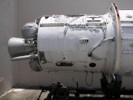
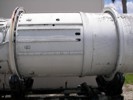
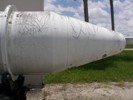
Agena-B Upper Stage
Agena-B Upper Stage on display at the Air Force Space and Missile Museum. (Photos: Richard Kruse, 2009)
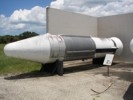
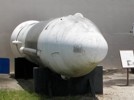
Agena-B Upper Stage
Agena-B Upper Stage on display at the Udvar Hazy Center. (Photos: Richard Kruse, 2008)
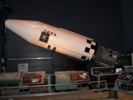
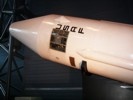
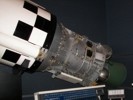
Agena Engine
Bell Model 8048 Rocket Engine on display at the National Museum of the United States Air Force. (Photos: Richard Kruse, 2007)



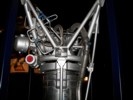
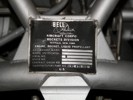
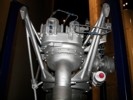



Atlas Mercury
Atlas-D, the first operational ICBM variant of the Atlas, was used to launch Mercury spacecraft on orbital missions. Ten Atlas-D rockets flew in support of project Mercury, including two failures and four manned missions.
Mercury-Atlas 6, launched on 20 February 1962, placed John Glenn into orbit. Given the call sign "Friendship 7", the successful three-orbit mission was Americas first manned orbital mission.
Mercury-Atlas 7, placed Scott Carpenter into orbit on 24 May 1962. On 3 October 1962, Walter Schirra was launched into orbit with Mercury-Atlas 8. Mercury-Atlas 9, the final Mercury mission, was piloted by Gordon Cooper and launched on 14 May 1963.
Atlas-D Rocket Photos
Atlas D (37D) Displayed in Mercury-Atlas configuration.
Atlas-D rocket on display at Kennedy Space Center. (Photos: Richard Kruse, 2009)














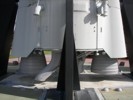

Atlas-H
Atlas-H was first flown in 1983. A total of five Atlas-H launches took place.
Atlas Centaur

Atlas-LV3C Centaur

Atlas-LV3C was the first Atlas rocket to use the Centaur upper stage (right). The first launch attempt, conducted on 8 May 1962, failed. The second test flight, launched on 27 November 1963, succeeded.
Several Surveyor Lunar landing probes were launched on Atlas-LV3C-Centaur rockets.

Atlas-SLV3C Centaur
The last three Surveyor Lunar landing probes were launched on Atlas-SLV3C-Centaur rockets.
Atlas Centaur rockets also launched the Mariner 6 and 7 Mars flyby spacecraft, the Mariner 9 Mars orbiter mission, and the Mariner 10 mission. Mariner 10, the first spacecraft to visit two planets, conducted flybys of both Venus and Mercury.
A number of Pioneer missions also flew on Atlas-Centaur rockets. Pioneer 10, the first spacecraft to visit Jupiter, was launched on 2 March 1972. Pioneer 11, launched on 5 April 1973, conducted flybys of both Jupiter and Saturn. The Pioneer-Venus Multi-Probe was launched on 8 August 1978, and the Pioneer-Venus orbiter was launched on 20 May 1978.
Atlas V
The Atlas V booster uses the RD-180 engine first used on the Atlas III.
The rocket family features a stretched Centaur stage (right) allowing increased performance over previous versions.
The new Centaur second stage can have either one or two RL-10A-4-2 rocket engines, allowing performance to better match payload.
All previous Centaur versions had two RL-10 engines.
Atlas V rockets are given a three-digit model designation. The first digit indicates the payload fairing diameter (4 or 5).
The second number indicates the number of solid rocket boosters attached (this number can be from 0 to 5).
The third number indicates the number of RL-10A-4-2 engines on the Centaur stage (this will always be either a 1 or 2).

Atlas V 400

The first Atlas V 400, a 401 model, launched on 21 August 2002.
The Atlas V 400, like earlier Atlas variants, features a four meter payload fairing.
The fairing is available in a variety of lengths to meet payload requirements.
Performance can be increased by adding up to three solid rocket boosters.
Notable payloads include the Lunar Reconnaissance Orbiter (LRO), and the Lunar Crater Observation and Sensing Satellite (LCROSS), both launched on 18 June 2009.
The booster was a 401 model.
The Solar Dynamics Observatory was launched on an Atlas V-401 on 11 February 2010.

Atlas V 411
The Atlas V 411 model includes the four meter fairing, and a single solid rocket booster.
Among the payloads launched on the Atlas V 411, was the OSIRIS-REx asteroid mission in 2016.

Atlas V 500
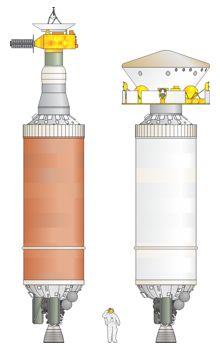 Atlas V Interplanetary Payloads
Atlas V Interplanetary PayloadsIllustration showing Centaur stages with the New Horizons Pluto probe and the Mars Science Lander spacecraft.
Both missions were launched on Atlas V Rockets. (An astronaut is included as a scale reference.)
Atlas V 500 performance can be adjusted by adding up to five solid rocket boosters. The large 5 m payload fairing is available in several lengths.
The first Atlas V 500, a 521 model, launched on 17 July 2003.
Missions have included several communications satellites and National Reconnaissance Office payloads
An Atlas V, 551 model, was used to launch the New Horizons mission to Pluto. The New Horizons launch, on 19 January 2006, imparted a velocity of 16.26 kilometers per seconds to the probe. This is the fastest speed of any space probe so far. New Horizons is on a solar-escape trajectory and will make a close fly-by of Pluto in July of 2015.
An Atlas V, 541 model, launched the Mars Science Laboratory in November of 2011.



















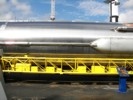
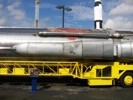
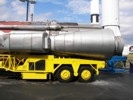
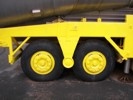
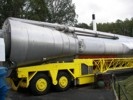
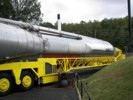

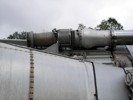
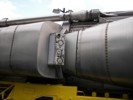

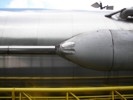



































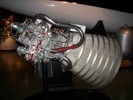
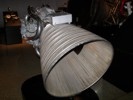
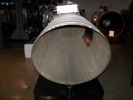

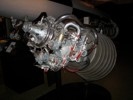
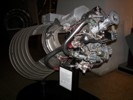
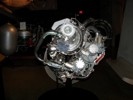












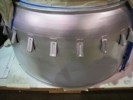

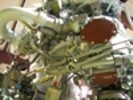

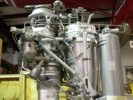
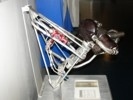
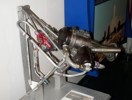
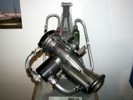
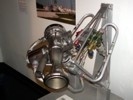

 Images by Richard Kruse are licensed under a Creative Commons Attribution-Noncommercial 3.0 United States License.
Images by Richard Kruse are licensed under a Creative Commons Attribution-Noncommercial 3.0 United States License.